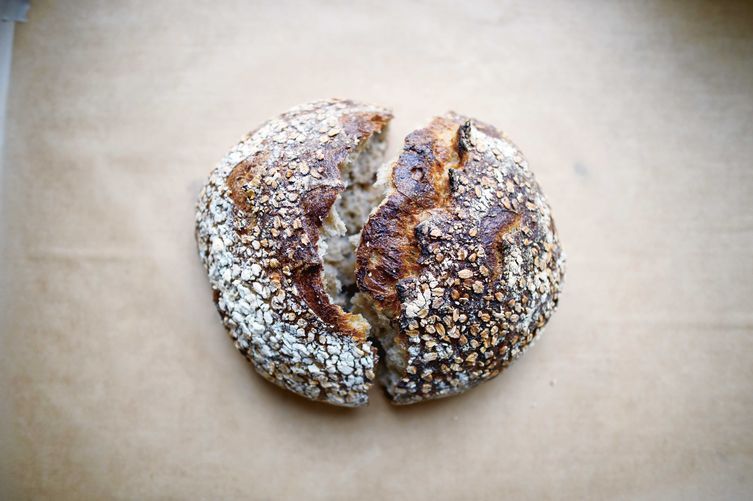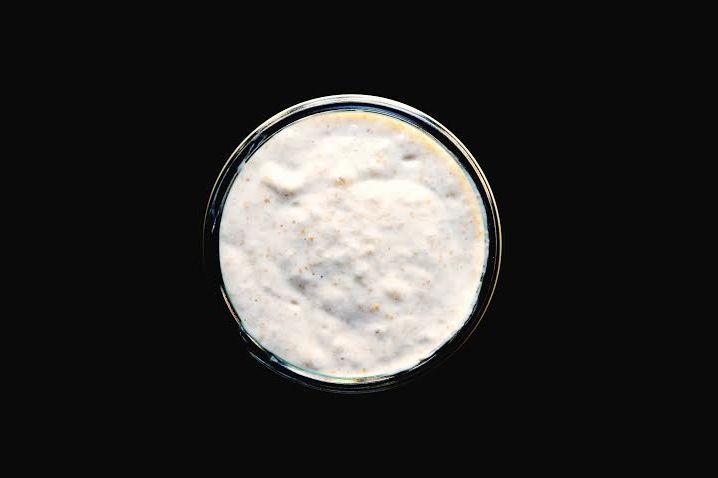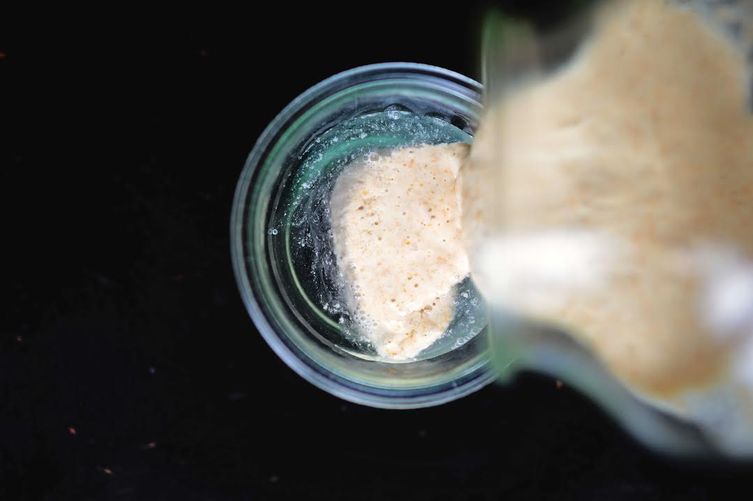This week's guest editor is Chad Robertson, the man behind San Francisco's über-popular Tartine Bakery. He'll be walking us through how to make one of the Porridge Breads from his latest book, Tartine 3, and sharing bits of baking knowledge along the way.
Today: Chad talks to us about the importance of growing and maintaining a good starter -- it's the first step to making his signature loaf.

Bread baking is all about managing fermentation, and the starter and leaven are integral to this process. Leaven imbues both flavor and form to the final loaf. I have found that a “younger” leaven with very little acidity is ideal. Here, it lends a sweet, almost nutty undertone rather than the sour, vinegary notes often associated with sourdough breads. In order to manage wild yeasts and bacteria, you must maintain a consistent routine and “feed” your starter regularly, thereby “training” it to be active and predictable. Feed it once every 24 hours, ideally in the morning, and watch it rise and fall throughout the course of the day.

The leaven is a portion of your starter. When the leaven is ready, it will float in water, a testament to the internal carbon dioxide activity. The leaven should smell sweet, in an overripe fruit sort of way. Ultimately, the leaven imparts a nuanced depth of flavor to the final loaf of bread and helps give it its springy form.

Tartine Bread Starter and Leaven
625 grams white bread flour
625 grams whole wheat bread flour
Slightly warm water
See the full recipe (and save and print it) here.
Photos by Chad Robertson
A Texas native, Chad Robertson always knew he wanted to devote himself to a profession that involved the craftsmanship of his hands. Robertson enrolled at the Culinary Institute of America (CIA) in Hyde Park, New York but quickly became entranced by the art of bread baking. Robertson's first apprenticeship was at Berkshire Mountain Bakery under the guidance of Richard Bourdon. There, Robertson worked 12 hour shifts where he would pull 3,000 loaves a day. From there, he - and wife, Elisabeth Prueitt - journeyed to France and the French Alps to continue learning the intricacies of working with wood fired ovens and naturally leavened, long fermented breads. Upon their return, they became involved with Dave Miller in Chico, CA where they continued to hone their skills and understanding, this time with a larger focus on whole grains. Soon after, Robertson and Prueitt moved to Pt. Reyes, CA where they built a modest bakeshop called Bay Village Bakery. It was here that Robertson baked for 18 hours straight with the intent to perfect his technique by focusing on "three ingredients and a world of possibility." After five years in the country, the hum of city life beckoned. In 2002, the couple opened Tartine Bakery, which almost instantaneously became a San Francisco institution. In 2005, the couple opened Bar Tartine, a restaurant that continuously redefines itself and draws inspiration from all corners of the globe. In 2006, Robertson and Prueitt published the Tartine Cookbook (Chronicle Books), in 2010 Robertson published Tartine Bread (Chronicle Books), and in fall of 2013 Robertson published his third book, Tartine Book No. 3 (Chronicle Books). He is the recipient, with his wife, of the 2008 James Beard Foundation Award for Outstanding Pastry Chef and has been featured in a variety of premier media outlets, including Bon Appetit, Elle, Vogue, Food Arts, Food & Wine, Saveur, and The New York Times.
Chad Robertson is considered one of the leaders in naturally leavened bread baking.




See what other Food52 readers are saying.